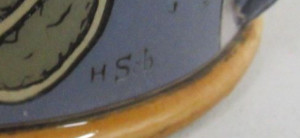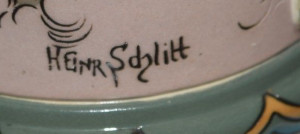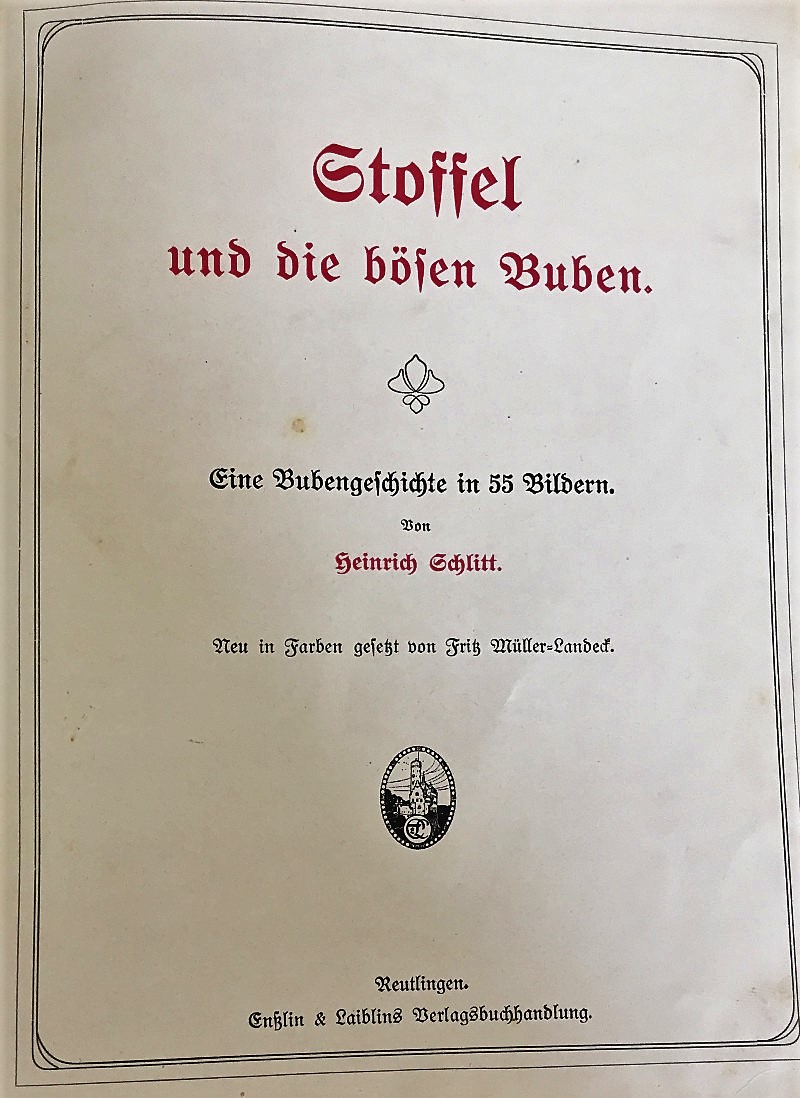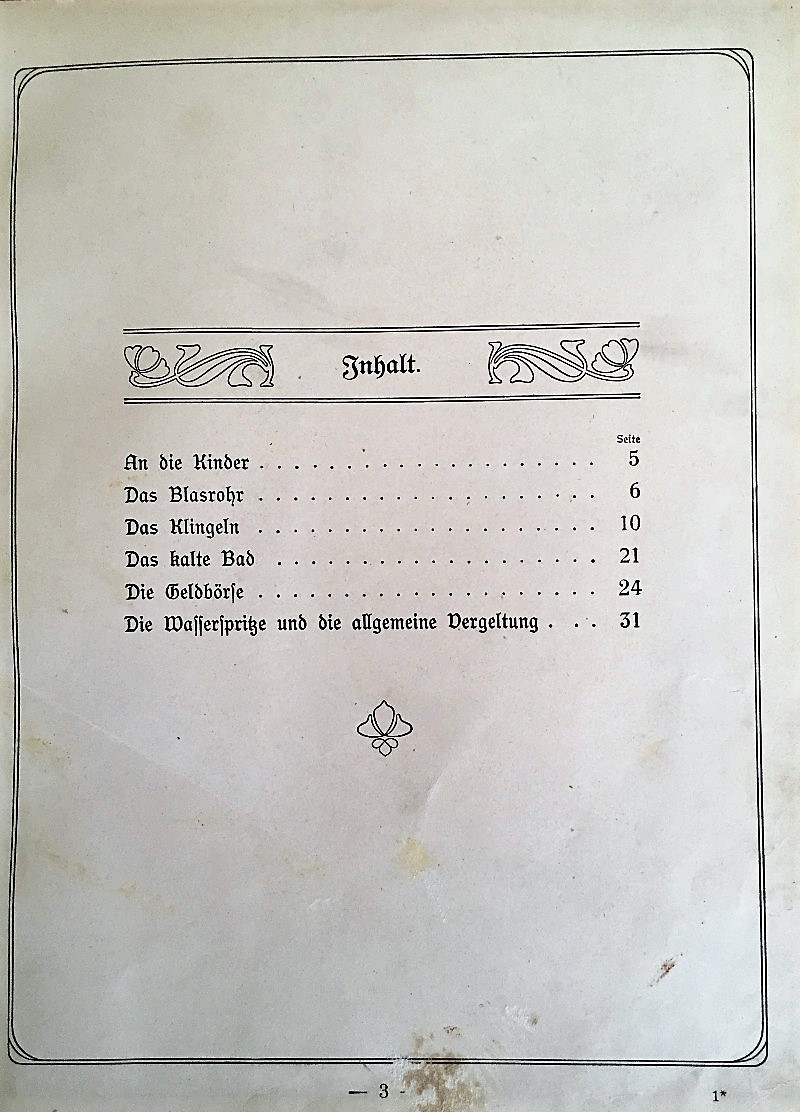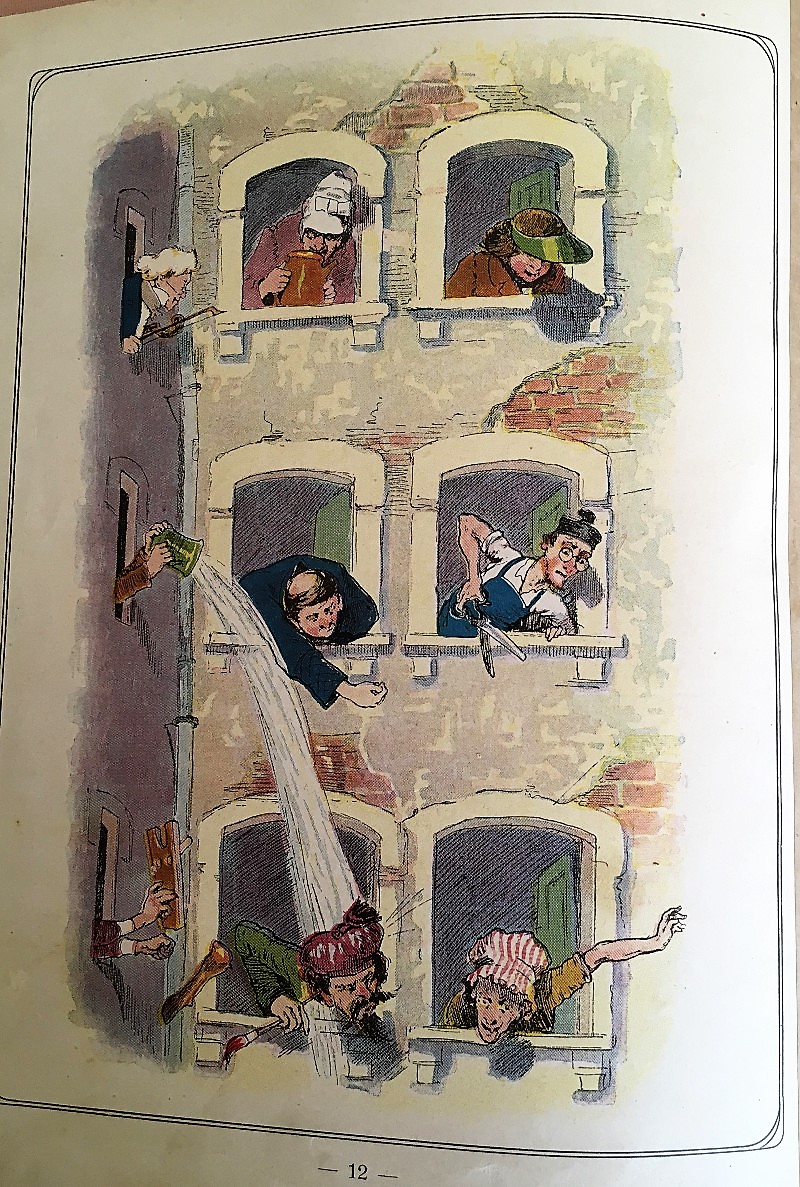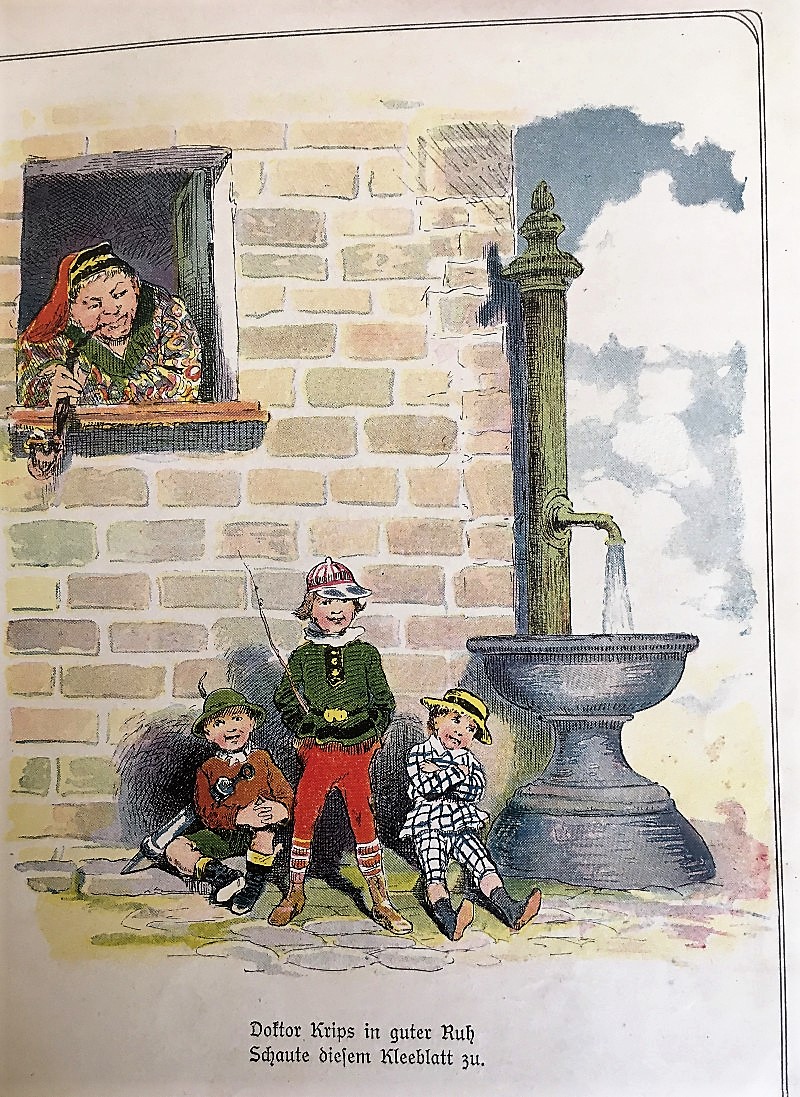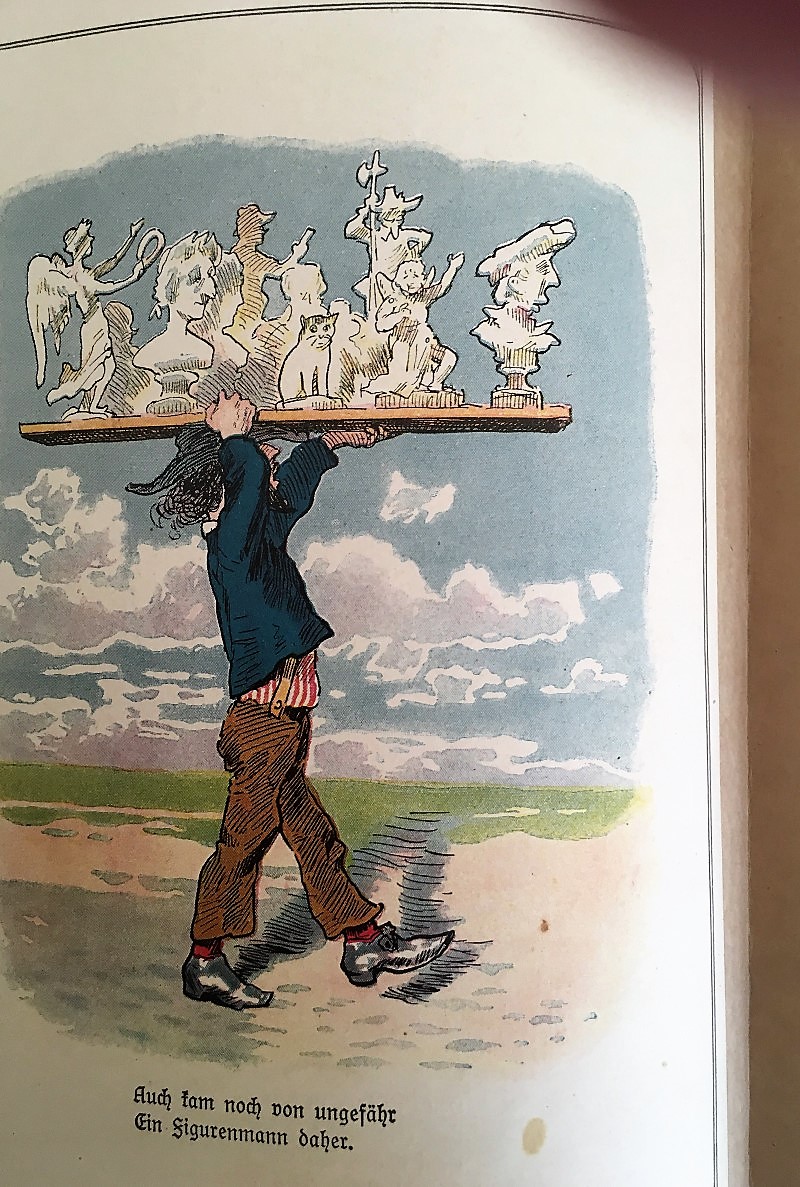Heinrich Schlitt (1849-1923)
Heinrich Schlitt (Signatures: H.S. / Heinr Schlitt / H. Schlitt) is rightfully called the "Walt Disney of the 19th century" and is known worldwide as the "Munich Dwarf Painter" where he also spent the last years of his life. For Mettlach collectors, the name evokes a storm of enthusiasm. Not a few have made the artist their exclusive collectible.
He is primarily known for his gnome painting, the depiction of circus scenes, and his preference for portraying lively nature in his works. For the company Villeroy & Boch Mettlach, however, the range extended much further, including scenes from antiquity, knights, fairy tales, animated objects, allegories, and drinking scenes.
Which collector wouldn't be proud to own a etched (= Chromolith-production process) oder transfer-printed Utransfer-printed stein or wall plate by this artis? But who was this man really? When was he born? Was he a "simple son" of the city of Munich - the city often associated with the name Heinrich Schlitt? Are his works found only on beer mugs and wall plates? Many questions that will be answered in the following!
Heinrich Schlitt was born on August 21, 1849, in Biebrich-Mosbach near Wiesbaden on the Middle Rhine. At that time, Wiesbaden was part of the Duchy of Nassau and is today the capital of Hesse and also the birthplace of the Mettlach artist Ludwig Hohlwein.
His inclination towards art became apparent at a young age. The first person who significantly influenced him was the highly talented Wiesbaden artist Kaspar Kögler. Indeed, it was Kögler who helped Schlitt develop his own style early on, which then provided him with a comfortable life throughout his years.
Schlitt had a pronounced sense of humor, often employed as an illustrator or artist, using a variety of materials such as wood, stone, ceramics, clay, and metal. Hundreds of illustrations (especially in magazines like "Über Land und Meer," "Daheim," and "Schalk") were created by him, and precisely these helped him become known to the public. Had he been born a century later, Walt Disney would have found an ideal partner in him :-)).
Some of his sketches, which only became known a few decades ago and date from 1869 - 1870, provide some information regarding his early works with pencil, ink, and watercolor.
In the early 1870s, his path led him to Munich, the capital of Bavaria, one of the largest kingdoms in the newly established German Empire. Under the guidance of painter Wilhelm Lindenschmidt and his first teacher in Munich, Ferdinand Barth, he began painting with oil and watercolors. Almost all his works from this decade until the turn of the century were characterized by the more cheerful things in life.
At about the age of 40, he had created about 40 paintings on the easel. Unfortunately, most of these works are in private ownership and thus not accessible to the public. It is assumed that they are mostly in the hands of private collectors in England and the USA, with very few to be found in Germany.
Schlitt was one of the main artists for the ceramic company Villeroy & Boch in Mettlach, mainly known among collectors for the drinking vessels and colorful wall plates he designed.
Together with Kögler and the younger Wilhelm Weimar (1859-1914), he painted the beer cellar of the New Town Hall in Wiesbaden in 1890, designed by architect Georg von Hauberisser. The most precious humorous, realistic frescoes of Wilhelminian Wiesbaden - although under monument protection since 1930 - were not restored for cost reasons (?!) in the 1970s but eradicated.
In Munich, thankfully, a different approach was taken with the legacy of Heinrich Schlitt. In the local Ratskeller, the funny and profound vault, ceiling, and wall paintings that Schlitt had created in 1905 are preserved. Today, these are one of the many attractions of the Bavarian capital and represent a special jewel, of which not only the city hall cellar operators are particularly proud.
During World War I and the following years, times in Europe were not easy, especially for an artist. However, Schlitt managed to delight people with his dwarf representations in painting during these difficult times, thereby securing his livelihood.
Schlitt died on November 13, 1923, in Munich. He spent the last years of his life in increasing solitude. He was buried in the Munich Waldfriedhof in an area specially set up to honor distinguished Munich artists.
Heinrich Schlitt was one of the most industrious designers for Villeroy & Boch Mettlach. Below is a list of objects including beer steins, plaques, vases, punch bowls, etc. However, the completeness/accuracy of this list cannot be guaranteed.
Krug / Bierkrug / beer stein 0.25L:
#2177/959 + /960, #2179/961 + /962, #2181/957 + /958
Krug / Bierkrug / beer stein 0.3L:
#1909/727, #2090, #2100, #2123, #2134, #2184/966 + /967, #2333/1012 + /1033
Krug / Bierkrug / beer stein 0.5L:
#1526/941 + /1076 + /1077 + /1078 + /1108 + /1143 + /1145, #1909/727 + /732 + /993 + /1008 + /1009 + /1010 + /1038 + /1042 + /1073 + /1074 + /1109 + /1110 + /1133 + /1143, #2089, #2090, #2091, #2092, #2100, #2133, #2134, #2140/1047, #2184/966 + /967, #2191, #2192, #2230, #2271/994 + /995 + /1107 + /1211, #2333/1033, #2382, #2520, #2580, #2662, #2752, #2765, #2767, #2778, #3089, #3090, #3091, #3092, #3093
Krug / Bierkrug / beer stein 1.0L:
#1526/1074 + /1108 + /1109 + /1110, #1909/1109, #2090, #2382, #2520, #2580, #2765, #2767, #3090, #3091, #3092
Krug / Bierkrug / beer stein 1.5L - 5.8L:
#2065, #2107, #1526/941, #2176/954, #2261/1012, #2107, #2384/1143, #2065, #2095, #2178/956, #2751, #2332/1031, #1526/1038, #2193, #3099, #2777, #2180/955, #2270/994, #2271/995, #2183/953, #2825, #2122, #2201, #2383, #2419/1041, #2262/1014 + /1054 + /1211, #2524, #2488/1059 + /1106 + /1133, #2764
Pokal
#2066, #2110
Wandteller / plaque / plate
#1044/1122 + /1123 + /1144, #2112, #2113, #2148, #2149, #2199, #2200, #2694, #2697, #2698, #2769, #2770
Bowle / bowl
#2088, #2703/1127, #2843, #3088
Bier-Zapfsäule (beer tap)
#2649, #2672, #2684
Heinrich Schlitt als Kinderbuch-Autor
Heinrich Schlitt had made a name for himself as a versatile artist. However, the fact that he authored a children's book is actually known to very few. Unfortunately, as far as current knowledge goes, it remained a single book, even though (in my personal impression) the story and illustrations are very appealing, and one might have expected more. Whether it was truly a one-time attempt as a children's book author remains an open question.
It is also known that he illustrated at least one other book with 5 watercolors. This book is titled "Worulf, der Rattenfänger von Hameln" (English: "Worulf, the Pied Piper of Hamelin") and was published in 1881 by A. Brecht. It is a tale from the 13th century. The illustrations were not signed but can be clearly attributed to Schlitt, even though he does not present himself as the well-known humorist within them.
Now, regarding the actual children's book he wrote himself, which is titled "Stoffel und die bösen Buben" ("English: Stoffel and the Naughty Boys") and was published in 1887 by Ensslin and Laiblin (Reutlingen). This book comprises 28 colored pages with rhyming verses and is divided into 5 stories of mischief with the titles:
- Das Blasrohr
- Das Klingeln
- Das kalte Bad
- Die Geldbörse
- Die Wasserspritze und allgemeine Vergeltung
- The Blowpipe
- The Ringing
- The Cold Bath
- The Purse
- The Water Sprayer and General Retribution






